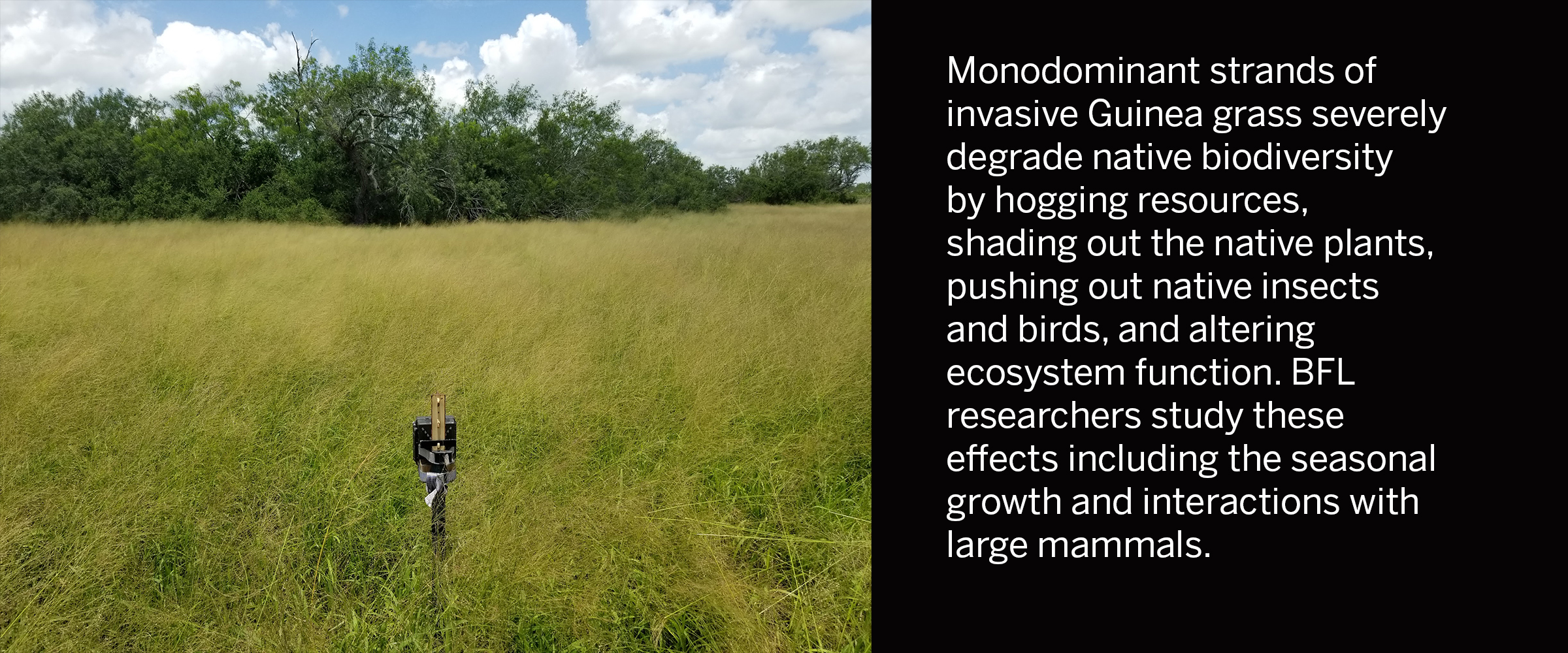Extra, extra, read all about it! Invasive Guinea grass research at BFL in the news

When we think of an invasive species, we typically imagine the one we know best here in Texas: the Red Imported Fire Ant (Solenopsis invicta). Swarming, stinging, disrupting everything in its path, very few of us can miss a fire ant. Either after it’s already left that nasty sting that seems to never heal, or the huge nesting mounds that dare us to step right into them while our faces are buried in our cell phones.
But there are other not so obvious invasive species that can be devastating in other ways. They might even be pretty, something we’d plant in our gardens, with long green blades and elegant seed heads that can catch the setting sun. Like the Guinea grass (Megathyrsus maximus).
But don’t be fooled. The Guinea grass is a wolf in sheep’s clothing. This grass is now one of the worst invasives in South Texas and it’s spreading into Central Texas at an alarming rate. So much so that research on it being done at Brackenridge Field Lab (BFL) has been getting exposure recently in the press.
One of our local news stations, KXAN, interviewed Aaron Rhodes, Research Associate at Brackenridge Field Lab, and Colin Morison, graduate student in the lab of Dr. Larry Gilbert, and former Stengl-Wyer Fellow 2021, about the research being done at BFL on this grass. The KXAN article and accompanying video, “Invasive grass has reached Austin,” is a great primer for getting oriented to this invasive and developing plans that could potentially prevent its rapid and destructive spread. You can find it here.
Central to the research effort to manage this grass in a sustainable way is the BFL based program spearheaded by Research Scientist Rob Plowes with collaborators in South Africa and Kenya to discover and develop safe biological control methods.

UT News also published “Invasive Grass in Texas Uses Chemical Warfare to Crowd Out Native Species.” This piece about BFL research on Guinea grass summarizes findings published in the journal Ecosphere. The title says it all. The article explores how this grass inhibits native plants through toxins. You can read this article here.
Axios Austin ran this article as well: “Researchers say grass wages chemical warfare.” The article gives a good summary of the threats the grass presents. You can read it here.
Another important finding from the BFL group was just published in April 2023. In work led by mycologist Dr. Liz Bowman, they showed that Guinea grass creates positive reinforcement to favor its own growth at the expense of native species through plant-soil feedbacks.
And not to be missed is an article by Brackenridge Field Station Manager, Jason Lawson: “Mowing with Purpose: Managing Invasive Grasses at BFL.” While having been published two years before the above mentioned articles, this piece describes the integrative invasive grass management program rolled out at BFL. It introduces the reader to the methods used at BFL to control invasive grasses like Guinea grass and a host of others. You can read it here.
So has Guinea grass got you a bit worried? We will be sure to share future findings in posts so stay tuned!



